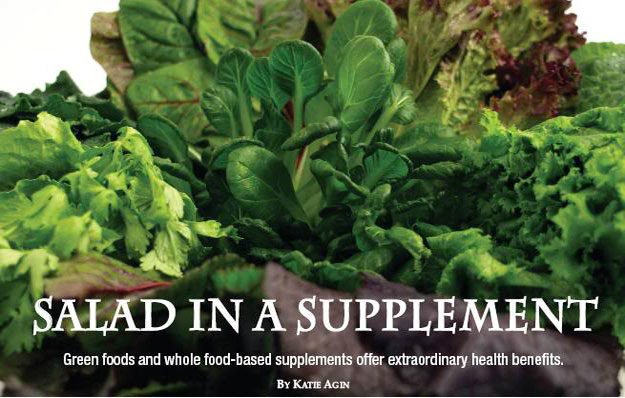Lately, the dietary habits of some Americans might have the Green Giant feeling a little less jolly, and a little more melancholy, making his trademarked “ho-ho-ho” a little more ho-hum.
Neil E. Levin, CCN, DANLA, nutrition education manager for NOW Foods, Bloomingdale, IL, confirms, “The typical American does not consume the recommended servings of fruits and vegetables, nor an adequate amount of dietary fiber from whole foods.”
Over the years, many efforts have been made to make fruits and veggies more people-friendly, including the introduction of the Green Giant himself and his pal, Little Green Sprout, the lesson-teaching vegetables of Veggie Tales, and the ever-so-alluring Chiquita banana girl. Since most Americans might be skeptical about donning a “fruit hat” like that of the famous banana babe, green and whole foods supplements are a less, ahem, fashion-forward, but a more practical and efficient way to get the important nutrients we require.
Donuts Are Green With Envy
It seems that our dancing vegetable friends are onto something great, especially when it comes to green foods, whose  nutritional profiles are quite astounding. “There is no other category of foods that provides a wider range and higher potency of micronutrient vitamins, minerals, antioxidants and accessory food factors than green foods,” says Herb Joiner-Bey, ND, scientific advisor for Barlean’s Organic Oils, Ferndale, WA.
nutritional profiles are quite astounding. “There is no other category of foods that provides a wider range and higher potency of micronutrient vitamins, minerals, antioxidants and accessory food factors than green foods,” says Herb Joiner-Bey, ND, scientific advisor for Barlean’s Organic Oils, Ferndale, WA.
Green foods run through the alphabet of vitamins, as well as the gamut of macro- and micro-minerals. “It is notable,” says Joiner-Bey, “that the most commonly deficient vitamin worldwide is folic acid, whose major source is green, leafy vegetables. In addition, two of the most commonly deficient and under-appreciated minerals among Americans—magnesium and potassium—are also nutrients whose best sources are green foods.”
In addition to the vitamin and mineral contents in green foods, their antioxidant power is impressive. Some of the compounds responsible for antioxidant benefits include polyphenols, flavonoids, carotenoids and co-enzymes. Nancy Angelini, director of education for MegaFood, Derry, NH, notes, “These classes of compounds have been found to reduce the risk of cardiovascular disease, blood sugar issues, inflammation problems, infections and much, much more.”
 Michael T. Murray, N.D., director of product development and education for Natural Factors, Everett, WA, adds to this, referencing clinical research published in the Journal of the American College of Nutrition showing that supplementing with a greens product (Enriching Greens from Natural Factors) “increases the antioxidant capacity in the blood, improves cholesterol levels and increases energy levels.”
Michael T. Murray, N.D., director of product development and education for Natural Factors, Everett, WA, adds to this, referencing clinical research published in the Journal of the American College of Nutrition showing that supplementing with a greens product (Enriching Greens from Natural Factors) “increases the antioxidant capacity in the blood, improves cholesterol levels and increases energy levels.”
But perhaps one of the most notable of these compounds is chlorophyll, which is responsible for giving greens their vivid color. Nathan Effron, public relations specialist for Sun Chlorella USA, Torrance, CA, says, “Known as nature’s natural purifier, chlorophyll serves the vital purpose of removing harmful elements (toxins) from the body.”
Often referred to as “the life blood of plants,” chlorophyll has been shown to have anti-carcinogenic effects (1), to have antiseptic properties, to aid in digestion and even to relieve bad breath! Says Jason Mitchell, vice president of research and product development and education for Country Life Vitamins, Hauppauge, NY, “To say that chlorophyll only does one thing is to say that tomatoes only do one thing!” Short of ordering a direct transfusion of this “life blood” from any unsuspecting foliage, the compound can be found in several varieties of green foods supplements.
Paul Licata, president of World Organic Corp., Huntington Beach, CA, says, “We believe that consuming a variety of different green foods is best, as each one has a different nutrient profile.” Some common ingredients in green foods supplements include:
Cereal grasses. Wheatgrass, barley, rye, kamut and oat grasses are excellent sources of chlorophyll and can be taken as part of a detoxification program or as a way to maintain intake of essential nutrients. They are commonly found in dried, powdered form and are responsible for many of the earthy, plant-like flavors in many supplements.
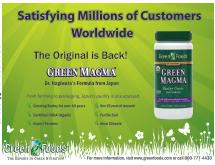 Spirulina. This algae has been on Earth for millions of years as one of the most independent forms of life. “Spirulina is one of the world’s most nutritious foods, containing over 60% protein, plus high amounts of beta carotene, mixed carotenoids and other essential nutrients and antioxidants. Spirulina contains some anti-viral and immune-stimulating compounds and has also been studied for its brain-protective effects,” says Marci Clow, M.S., R.D., senior director of product research with Rainbow Light Nutritional Systems, Santa Cruz, CA.
Spirulina. This algae has been on Earth for millions of years as one of the most independent forms of life. “Spirulina is one of the world’s most nutritious foods, containing over 60% protein, plus high amounts of beta carotene, mixed carotenoids and other essential nutrients and antioxidants. Spirulina contains some anti-viral and immune-stimulating compounds and has also been studied for its brain-protective effects,” says Marci Clow, M.S., R.D., senior director of product research with Rainbow Light Nutritional Systems, Santa Cruz, CA.
Also, “Organic spirulina is exceptionally easy to digest because it has cell membranes instead of fibrous cell walls. It is a concentrated source of antioxidants and phytonutrients, B vitamins, vegetarian protein and omega fatty acids,” Clow continues.
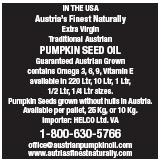 To put this tiny algae in perspective, “A three-gram daily serving of Hawaiian spirulina is so packed with nutrition that it has the same level of antioxidants, enzymes and phytonutrients as five servings of fruits and vegetables!” extols Bob Capelli, vice president of sales and marketing for Cyanotech Corporation, Kailua-Kona, HI.
To put this tiny algae in perspective, “A three-gram daily serving of Hawaiian spirulina is so packed with nutrition that it has the same level of antioxidants, enzymes and phytonutrients as five servings of fruits and vegetables!” extols Bob Capelli, vice president of sales and marketing for Cyanotech Corporation, Kailua-Kona, HI.
Chlorella. Chlorella is a microalgae rich in chlorophyll, and, according to www.sunchlorella.com, “produces an amazingly large amount of protein that is about 38 times that of soy beans and about 55 times that of rice.” Also, one of chlorella’s unique properties is a phytonutrient called Chlorella Growth Factor that is rich in nucleic acids, which are important for the foundation for life itself.
Blue-green algae. Also known as Aphanizomenon Flos-Aque (AFA), this microalgae has a remarkable nutritional profile. According to Dana Durant, sales manager for Klamath Valley Botanicals, LLC, Klamath Falls, OR, AFA contains 20 antioxidants, 68 minerals, 70 trace elements, enzymes, the B-vitamin spectrum, vitamin K and essential fatty acids. Also, “Approximately 0–15% of the dry weight of blue-green algae is represented by phycocyanins, molecules that recent studies have shown to have powerful anti-inflammatory effects,” says Durant. “Phycocyanins are indeed powerful COX-2 inhibitors, similar to the new anti-inflammatory drugs on the market but without the dangerous side effects.”
Spinach, kale and broccoli. These green vegetables can be powdered and/or blended into various types of supplements including capsules, tablets, liquids and foods/beverages. As far as Popeye is concerned, spinach should win the spotlight for its high levels of vitamins A and K, magnesium, folate, manganese and fiber. But, broccoli has nothing to be shy about either. Gene Bruno, M.S., M.H.S., consultant for Jarrow Formulas, Los Angeles, CA, says that broccoli and broccoli seed contain sulforaphane glucosinate (SGS), which is metabolized to sulforaphane. “Sulforaphane from broccoli reduces oxidative stress in the cardiovascular system and the kidneys” and “increases the action of phase-2 detoxification enzymes in the liver, which inactivates many toxins,” he says.
Kale, a lesser-known member of the cabbage family, can provide up to 10.4% of the daily value of fiber per cup (2).
Seaweed, kelp and other sea vegetables. We typically think of seaweed as the delicious layer that holds our sushi rolls together. But, seaweed and other sea vegetables can be enjoyed on their own, in salads and soups and are commonly found in greens supplements. They, especially kelp, are rich in iodine, which is important for thyroid health, in addition to being high in levels of folate, vitamin K and magnesium.
Other common ingredients include alfalfa, parsley and other various herbs.
Although these individual green ingredients can be useful for those who want specific, isolated compounds, many products are now formulated with various combinations of ingredients to provide numerous benefits. Bob Terry, Ph.D., 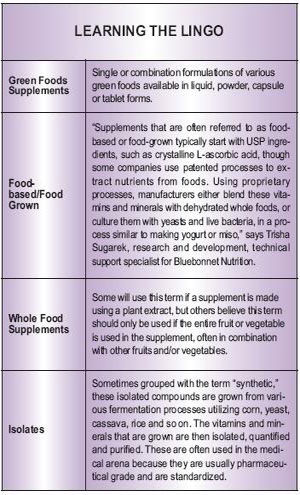 technical services specialist for Green Foods Corporation, Oxnard, CA, says, “While in the past green food supplements mainly consisted of single greens such as barley grass, wheat grass, alfalfa, spirulina, chlorella, green tea, broccoli, kale, etc…it is now common to see green food combination products in the marketplace. Green foods are also compatible with and enhance every other type of supplement including fruits, probiotics and enzymes, and we now see green food ingredients in whole food multivitamins, protein supplements, digestive formulas, detox formulas and energy drinks.”
technical services specialist for Green Foods Corporation, Oxnard, CA, says, “While in the past green food supplements mainly consisted of single greens such as barley grass, wheat grass, alfalfa, spirulina, chlorella, green tea, broccoli, kale, etc…it is now common to see green food combination products in the marketplace. Green foods are also compatible with and enhance every other type of supplement including fruits, probiotics and enzymes, and we now see green food ingredients in whole food multivitamins, protein supplements, digestive formulas, detox formulas and energy drinks.”
Green Means Good For You, Not “Gack!”
Although their taste may be unique, green foods supplement regimens no longer require pinched noses and chugging: the days of green glumps and taste bud anxiety are long gone.
The taste of greens is certainly very earthy and different, but newer formulations have made greens much more accessible to the average person. “Flavors that mask the inherent ‘earthy’ taste of green foods, but also add functional value are becoming favorites of the mainstream consumer,” says Christopher Daniels, director of sales and marketing for Greens Plus, Vero Beach, FL. For example, Greens Plus offers greens products in flavors such as Wild Berry Burst and Orange Greensicle.
Nonetheless, people sometimes begin to crave the plant-like flavors of greens because of their association with a healthy state of being.
Besides, says Mark Timon, M.S., vice president of research and development for New England Greens LLC d/b/a Vibrant Health, Canaan, CT, “If men and women can learn to accept and seek out the taste of beer, cigars, martinis, coffee and tofu, learning to like the taste of green foods should be quite easy.”
And, it seems that people are learning quickly—both consumers and manufacturers alike. “The use of green foods is no longer limited to a small, die-hard core of followers. They have become one of the most popular dietary supplements sold in the past few years. Improvements in dispersion, dissolution and taste are the primary reasons along with a growing awareness of their tremendous health benefits,” says Murray.
As much as taste is a factor, so is texture. Levin notes that formulations made from dried juices “can be mixed more easily into beverages without as much need for the addition of lecithin or other dispersion aids.”
|
Select Product Offerings Barlean’s Organic Oils: Barlean’s Greens (original and berry-flavored). Bluebonnet Nutrition: Super Earth Multinutrient Formula, Super Earth Green Utopia Powder. Country Life Vitamins: Under the Realfood Organics brand, His Daily Nutrition, Her Daily Nutrition, Your Daily Nutrition, Ultimate Daily Nutrition. Cyanotech Corporation: Spirulina Pacifica. Green Foods Corporation: Green Magma, Magma Plus, Veggie Magma, Berry Barley Essence, Carrot Essence and Green Tea Barley essence. Greens Plus: Greens Plus Signature Product Line, Protein Greens, Thermo Greens, Fiber Greens. Jarrow Formulas: Green Defense and BroccoMax. Klamath Valley Botanicals: Klamath’s Best blue green algae. MegaFood: DailyFoods ColdFusion FoodState Formulas. Natural Factors: Enriching Greens, BlueRich, BerryRich. NOW Foods: Eco-Green, Special Two, Alfalfa, Barley Grass, Blue-Green Algae (Vcaps or tabs), Chlorella, Kelp, Spirulina (Organic tabs or powder; Hawaiian powder, tabs or Vcaps), certified organic Wheat Grass, Green PhytoFoods in powder and tablets. NOW is also introducing Multi-Food Complex for Men and Multi-Food Complex for Women. Peter Gillham’s Natural Vitality: Organic Life Vitamins liquid multi-nutrient supplement contains 24 antioxidant veggies, superfruits, fruits and berries, and much more. Rainbow Light Nutritional Systems: Products use a whole food or green food as part of their nourishing base, including: Men’s One, Prenatal One, RejuvenAge 40+ Multivitamin, Women’s One Multivitamin/Mineral, and the new Daily Fruit & Fiber. Sun Chlorella USA: Chlorela Tablets, Granules and Cream, Chlorella Wakasa (liquid). To Go Brands: Go Greens Super Fruits & Veggies is packed with more than 15 organic fruits and veggies, says the company. Vibrant Health: Green Vibrance, Field of Greens, Green Calcium, Green Vibrance Junior, Phyto-Chromium, Phyto-Selenium, Green D3, Green Protein, Rainbow Vibrance. World Organic Corporation: Chloro-Greens Powder, Liqui-Kelp and Liquid Chlorophyll. XanGo: Whole mangosteen fruit XanGo Juice. |
People-pleasing products are available in mix-in powders, pills, capsules, tablets and liquids. John H. Maher, DCCN, FAAIM, director of education and research for To Go Brands, Inc., San Diego, CA, says, “Some of the very newest greens products taste great, mix instantly, have a smooth texture, and are a lighter, brighter, more appealing green. The main obstacle is with people who won’t even try these new products.”
 This is where retailers come in. Maher recommends in-store taste testing for customers, to “open their eyes and taste buds to what’s available today.” Also, convenient stick packs, such as those from To Go Brands, offer an easy way to keep green foods available throughout the day to ensure that consumers get their recommended daily amounts.
This is where retailers come in. Maher recommends in-store taste testing for customers, to “open their eyes and taste buds to what’s available today.” Also, convenient stick packs, such as those from To Go Brands, offer an easy way to keep green foods available throughout the day to ensure that consumers get their recommended daily amounts.
Overall, “Nothing can replace their personal experience with the product,” says Bob Freeze, vice president of corporate communications for XanGo, LLC, Lehi, UT. Retailers should discuss with customers their individual needs, tastes and preferences to ensure they are buying a product that will please them and have them lining up at the store for more. Also, many customers are often “stuck” on one product, and may simply need a little tour around the greens aisle to open their eyes to new formulations, delivery methods and flavors.
Whole Food Supplements, Whole Lotta Nutrition
In addition to green foods, a great place to get our daily nutrients is from whole food supplements, which incorporate all types of fruits and vegetables, not just those of the green variety. Although seemingly simple to define, there are various ideas about what comprises whole food supplements. Effron of Sun Chlorella offers a definition: “Whole food supplements contain foods in their ‘whole’ form, with all the vitamins, minerals, antioxidants, enzymes and other nutrients working synergistically to provide the body with complete, unadulterated nutrition. Removing one or more parts from the whole results in a ‘synthetic’ or ‘fractionated’ product.” The reasoning behind this view is that certain parts of plants, although they are sometimes not viewed as traditionally edible, contain the most important nutrients and should therefore be included in the product.
For example, XanGo’s mangosteen supplement is made from the whole fruit and contains “the rind, the seeds and pulp—the pulp being where most of the phytonutrients are concentrated in the mangosteen—and to do so in the fruit’s natural form, not a concentrate or extract,” says Freeze. According to XanGo, some of the benefits associated with whole fruit mangosteen supplements are supporting joint health, promoting a healthy seasonal respiratory system, supporting the immune system, maintaining intestinal health and neutralizing free radicals.
Others believe whole food supplements do not require the entire plant to be utilized. Trisha Sugarek, research and development, and technical support specialist for Bluebonnet Nutrition, Sugar Land, TX, defines whole food supplements as “from fruit or vegetable extracts that come from a single plant or natural food source” offering “better absorption and bioavailability by the body.”
Differences aside, experts agree that whole food supplements provide the benefit of the plant’s original compounds working together in amazing ways. Commenting on what distinguishes these supplements from others, Joiner-Bey says, “Man-conceived blends of nutrients, such as vitamin–mineral combinations, have their place. Nevertheless, they  cannot match whole food extracts because many of the constituents in whole plant foods have yet to be identified; therefore, they are beyond current human understanding and would be omitted from man-made blends of ingredients.”
cannot match whole food extracts because many of the constituents in whole plant foods have yet to be identified; therefore, they are beyond current human understanding and would be omitted from man-made blends of ingredients.”
According to Angelini, whole food supplements offer several distinguishing benefits:
• They are easily digested and do not cause stomach upset/nausea or flushing.
• They are easily recognized by the body because our bodies recognize food first.
• Proteins, fats and carbohydrates in whole foods act as carriers or delivery systems for the micronutrients ensuring their full utilization at the cell or tissue, so one can use less milligrams, but get more satisfying results.
“What’s more,” says Clow, “single nutrients in isolation are not natural; you won’t find a ‘vitamin C berry’ in nature.”
 Since it would be almost impossible to consistently eat such a wide variety of fruits and vegetables to gain all of their benefits every single day, whole foods supplements containing a variety of plants can act as one-stop nutritional supplement pop. Maher lists only a few of the important compounds within them: “Good examples are the organic sulfurs in broccoli and kale, the polyphenols in grapes and green tea, the chlorophyll in greens, the organic acids in raspberries, the carotenoids in beets and carrots, the polysaccharides (complex sugars) in oat beta glucan and aloe vera. It is phytonutrients like these that are likely largely responsible for the fact that people who eat the most fruits and vegetables have significantly less of all the common diseases of aging.”
Since it would be almost impossible to consistently eat such a wide variety of fruits and vegetables to gain all of their benefits every single day, whole foods supplements containing a variety of plants can act as one-stop nutritional supplement pop. Maher lists only a few of the important compounds within them: “Good examples are the organic sulfurs in broccoli and kale, the polyphenols in grapes and green tea, the chlorophyll in greens, the organic acids in raspberries, the carotenoids in beets and carrots, the polysaccharides (complex sugars) in oat beta glucan and aloe vera. It is phytonutrients like these that are likely largely responsible for the fact that people who eat the most fruits and vegetables have significantly less of all the common diseases of aging.”
Safety and Quality
Because of the numerous compounds and ingredients included in many of the new formulations on the market, a lot of consumers may be hesitant to make a purchase because they are afraid of what’s really in there. And rightfully so, says Mitchell. “You should ask questions if you can’t pronounce it. Find out what it is. You should never put something in your body you don’t recognize,” he says. Mitchell advises, though, that just because something has a complicated name, doesn’t necessarily mean it’s bad—retailers should prepare for this and become knowledgeable about all ingredients and manufacturing processes for the products stocked on their shelves.
Effron recommends: “Aside from the reputation a company has, consumers should look to third-party sources for verification of the quality and safety of a company’s products.”
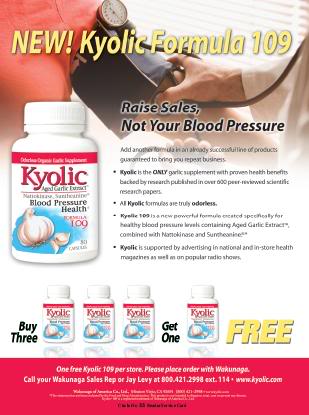 Capelli agrees, noting that certain ingredients may be more difficult to certify or more expensive and, “There are only a few manufacturers of spirulina that have obtained GRAS status with the United States Food and Drug Administration and operate under cGMP. It would behoove consumers to be sure their green food suppliers meet these quality certifications.”
Capelli agrees, noting that certain ingredients may be more difficult to certify or more expensive and, “There are only a few manufacturers of spirulina that have obtained GRAS status with the United States Food and Drug Administration and operate under cGMP. It would behoove consumers to be sure their green food suppliers meet these quality certifications.”
Also, what happens on the farm will affect the resulting quality of a particular product. “Organic farming helps ensure a cleaner starting material. Immediate, cold processing on the order of, for example, freeze drying or refrigerated juicing and drying, helps retain maximum nutritional value,” says Timon.
It’s Actually Very Easy Being Green
As previously mentioned, responses to greens, vegetables and fruits from the average consumer may range from a pinched nose, to a shaking head or even an “ugh.” But “retailers can explain to consumers that food-based multivitamins or green food supplements can play an important role in helping them to fill dietary gaps and obtain optimal potencies or protective nutrients and phytonutrients found in fruits and vegetables,” advises Clow. Yes, consumers can find a way to get their nutrients without boiling any brussels sprouts, and retailers should let them know!
Capelli recommends, what “retailers should focus on is dealing with the modern American consumer who is stressed for time and overly busy.”
 Okay, so…everybody, then. From busy kids in school to frantic professionals, most Americans don’t have the time or energy to devote to eating the proper amounts of greens, fruits and veggies. “Green food supplements are especially beneficial for those who normally do not obtain a daily serving of vegetables,” says Effron.
Okay, so…everybody, then. From busy kids in school to frantic professionals, most Americans don’t have the time or energy to devote to eating the proper amounts of greens, fruits and veggies. “Green food supplements are especially beneficial for those who normally do not obtain a daily serving of vegetables,” says Effron.
But, new research shows that even those who get their recommended daily servings still may be missing out on important nutrients.
Nutrient densities in plants depend on the quality of the soil in which foods are grown. Improper farming techniques over the years have led to poorer soil quality, and therefore less nutritious food (although recent studies show that organic farming can produce more nutrient dense foods). Ken Whitman, president of Peter Gillham’s Natural Vitality, Burbank, CA, notes, “The nutrient content of foods today compared to half a century ago ranges from 15 to 75 percent less. Certified organic produce is not a guarantee of nutrient density.”
Timon notes, “This sad state of affairs implies that achieving optimal nutrition may be impossible without supplementation.”
The soil not only affects the quality of foods we eat off our plates, but also that of our green and food-based supplements. Ideally, to create the optimal products, “green plants should be grown organically in composted rich soil and harvested when their nutrient content is at its peak,” says Terry of Green Foods Corporation.
Because nutrient deficiencies can vary greatly among people due to crop growth locations and dietary habits, individual or isolated vitamins can be very beneficial. Mitchell of Country Life notes the term “synthetic” vitamins is often misused and that these isolates, as he calls them, can be used to address specific nutrient deficiencies, whereas whole food supplements can be used as more of a general, cover-most-of-your-bases product.
 Should this question arise on the retail level, Murray advises, “I would not recommend selling against other supplements, but rather highlighting the benefits provided in the specific whole food supplement.”
Should this question arise on the retail level, Murray advises, “I would not recommend selling against other supplements, but rather highlighting the benefits provided in the specific whole food supplement.”
Special and Sensitive Diets
Even those with special or sensitive diets should make use of the benefits of green and whole food supplements, with the approval of a healthcare professional, of course. “They are an excellent source of valuable nutrition for vegetarians and lactose-intolerant consumers,” says Daniels.
How ever, it greatly depends on what the consumer is sensitive to. Says Sugarek, “Currently, the ‘big eight’ or most common food allergies account for 90% of the hospitalizations in the U.S. Those ‘big eight’ are milk, egg, fish, crustacean shellfish, tree nuts, peanuts, wheat and soybeans. Green foods may contain nuts of many varieties as well as soybeans directly or through cross contamination. For persons who are allergic or are sensitive to nuts, wheat or soybeans, read the green food label just a little more closely or contact the manufacturing facility for documentation that the product is free of those ingredients.”
ever, it greatly depends on what the consumer is sensitive to. Says Sugarek, “Currently, the ‘big eight’ or most common food allergies account for 90% of the hospitalizations in the U.S. Those ‘big eight’ are milk, egg, fish, crustacean shellfish, tree nuts, peanuts, wheat and soybeans. Green foods may contain nuts of many varieties as well as soybeans directly or through cross contamination. For persons who are allergic or are sensitive to nuts, wheat or soybeans, read the green food label just a little more closely or contact the manufacturing facility for documentation that the product is free of those ingredients.”
In response to the growing number of Celiac and gluten-sensitivity diagnoses in the United States, Levin says, “We are conscious of the need to formulate some products that are gluten free by avoiding the use of wheatgrass and barley grass.”
Nevertheless, says Joiner-Bey, well-designed greens products can still be free of gluten, dairy and other potential food allergens. “Even though greens products may contain the green leafy portions of grass plants that produce grains (for example, wheat), they should be gluten free, because the gluten in grass plants is confined to the seeds (grain),” he says.
Consumers with other digestive issues may also benefit from these supplements. “The detoxification benefits often associated with these products may even prove to be valuable to people who are following sensitive diets,” says Bruno, referencing a randomized, double-blind placebo-controlled study concerning wheat grass juice in the treatment of ulcerative colitis. The study stated, “Twenty-one patients completed the study, and full information was available on 19 of them. Treatment with wheat grass juice was associated with significant reductions in the overall disease activity index (P = 0.031) and in the severity of rectal bleeding (P = 0.025). No serious side effects were found” (3).
People with sensitivities outside of allergies can also take advantage of these supplements. “Persons with blood sugar problems who must avoid the sugar load from fruits and veggies juices, would also benefit from the rich micronutrients found in greens, plus fruit and vegetable mixes that are sweetened with non-caloric sweeteners, like stevia,” says Maher. WF
References
- M.T. Simonich, et al., “Natural Chlorophyll Inhibits Aflatoxin B1-Induced Multi-Organ Carcinogenesis in the Rat,” Carcinogenesis. 28 (6), 1294–1302 (2007).
- The World’s Healthiest Foods, www.whfoods.com, accessed June 2, 2009.
- E. Ben-Arye, et al., “Wheat Grass Juice in the Treatment of Active Distal Ulcerative Colitis: A Randomized Double-blind Placebo-Controlled Trial.” Scandinavian Journal of Gastroenterology, 37 (4), 444–449 (2002).
Published in WholeFoods Magazine, July 2009

